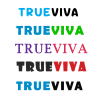The Best Back-End Frameworks for Web Development in 2025
In the ever-evolving world of web development, choosing the right back-end framework is crucial to building fast, secure, and scalable applications. As we move into 2025, the landscape of back-end development continues to shift, offering developers new tools and improved performance. For freelancers and web developers at FreelancerBridge, staying updated on the best frameworks is essential for delivering top-notch client projects. In this guide, we’ll explore the best back-end frameworks in 2025, helping you select the right technology stack for your next web development project.
Long Description
The Best Back-End Frameworks for Web Development in 2025
Back-end frameworks act as the backbone of any web application. They handle database operations, server-side logic, user authentication, API creation, and so much more. Choosing the right back-end framework can make development faster, enhance security, improve scalability, and significantly boost your productivity.
Here’s an in-depth look at the top back-end frameworks developers are loving in 2025:
1. Node.js with Express.js
Why It’s Popular: Node.js remains a favorite thanks to its non-blocking, event-driven architecture that’s perfect for building fast, scalable applications.
Express.js, built on top of Node.js, provides a lightweight, flexible framework for routing, middleware, and server management.
Key Benefits:
Extremely fast performance
Massive package ecosystem (NPM)
Great for real-time applications like chats and games
Strong community support
2. Django (Python)
Why It’s Popular: Django is a high-level Python framework that emphasizes rapid development and clean, pragmatic design.
Key Benefits:
Built-in admin panel
Secure by default (handles authentication, CSRF protection, etc.)
ORM (Object-Relational Mapping) for database management
Scalable and versatile for projects ranging from simple websites to enterprise apps
3. Ruby on Rails (RoR)
Why It’s Popular: Ruby on Rails still holds strong due to its “convention over configuration” philosophy, making it easy to build applications quickly.
Key Benefits:
Rapid development speed
Large library of plugins (gems)
Strong emphasis on best practices
Excellent for MVPs and startups
4. Laravel (PHP)
Why It’s Popular: Laravel leads the PHP world with its elegant syntax and robust set of features aimed at easing common development tasks.
Key Benefits:
MVC architecture
Built-in authentication, queuing, and caching
Artisan CLI tool for faster development
Great documentation and vibrant community
5. Spring Boot (Java)
Why It’s Popular: Java remains a dominant enterprise language, and Spring Boot simplifies the development of production-grade applications.
Key Benefits:
Rapid setup with minimal configuration
Built-in security, logging, and database integration
Highly scalable and reliable
Backed by a large corporate community
6. FastAPI (Python)
Why It’s Popular: FastAPI has gained huge momentum due to its speed and efficiency, especially for building APIs.
Key Benefits:
Asynchronous support for high-performance APIs
Easy integration with databases like PostgreSQL
Auto-generated documentation (Swagger UI)
Ideal for modern web apps and microservices
7. ASP.NET Core (C#)
Why It’s Popular: Microsoft’s ASP.NET Core is a powerful, open-source, cross-platform framework for building cloud-based web applications.
Key Benefits:
High performance and scalability
Excellent support for microservices and APIs
Strong security features
Integrated with modern cloud solutions like Azure
8. Koa.js (Node.js)
Why It’s Popular: Created by the same team behind Express.js, Koa.js offers a more minimalistic and modular approach.
Key Benefits:
Modern and lightweight
Improved error handling
Cleaner middleware stack
Perfect for developers who prefer flexibility
9. NestJS (Node.js + TypeScript)
Why It’s Popular: NestJS is growing rapidly because it combines the best of Node.js with TypeScript’s static typing.
Key Benefits:
Scalable architecture
Modular development
Out-of-the-box support for GraphQL and WebSockets
Suitable for enterprise-grade applications
10. AdonisJS (Node.js)
Why It’s Popular: AdonisJS is gaining attention for bringing a Laravel-like developer experience to Node.js.
Key Benefits:
Full-stack Node.js framework
Built-in ORM, authentication, and validation
Structured project organization
Developer-friendly and great documentation
How to Choose the Right Framework for Your Web Development Projects
Choosing the right back-end framework isn't about popularity alone — it should align with your project goals, budget, and scalability requirements. Here’s a quick checklist:
Project Size: For small to medium apps, Node.js/Express or Laravel could be perfect. For enterprise apps, Spring Boot or ASP.NET Core might be better.
Developer Experience: Choose a framework that matches your language skills (Python, JavaScript, PHP, Java, etc.).
Performance Needs: For real-time apps (like chats), Node.js frameworks like NestJS or Koa.js work best.
Community Support: Frameworks with large communities (Django, Laravel, Express.js) ensure better learning resources and troubleshooting help.
Time to Market: Ruby on Rails and Laravel are excellent for launching MVPs and startups quickly.
Conclusion
In 2025, web development continues to be more exciting and dynamic than ever. As a freelancer or web developer at FreelancerBridge, understanding the strengths and weaknesses of each back-end framework can help you deliver exceptional projects to your clients.
Whether you’re building a fast API with FastAPI, a scalable enterprise app with Spring Boot, or a real-time app with NestJS, choosing the right framework is your first step toward success. Stay curious, keep learning, and pick the tools that best fit your project’s vision and demands.


 by Emily
by Emily




